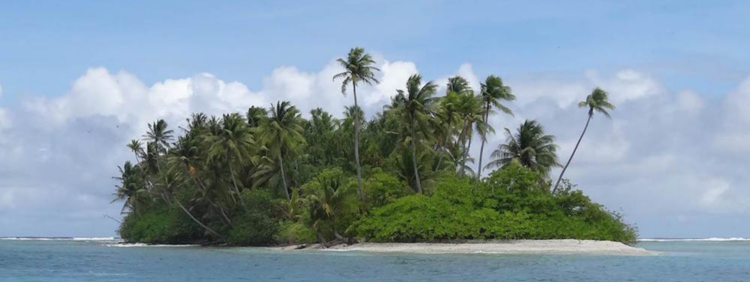In my presentation to the American Renaissance conference the other day I mentioned prehistoric contacts between the different human races.
From Section 3 of that talk:
As we build up ever bigger genomic databases from ever more places, we are going to get many more surprises about these ancient, unrecorded encounters. Just in January this year, we learned that second-wave populations from India—those associated with the Dravidian languages—made a large genetic contribution to the Australian population around four thousand years ago. You can be sure we shall see a lot more of these stories.
In the spoken form of the presentation—available soon from AmRen on DVD—I stressed that this area of knowledge is a mass of moving targets, with new data coming in almost daily.
As if to illustrate the point, here is a paper published last week (actually, there is anthropologist Henry Harpending writing about that paper, but he gives a link) suggesting that “people from the Jomon culture in [pre-literate] Japan may have reached northwestern South America.”
Henry describes the overall picture. Sharp-eyed readers will catch a Kipling reference.
For the Americas, the [current] pre-Columbian picture is this, more or less: the original Amerind migration, followed by the Na-Dene, then Eskimo-Aleuts, spiced with Jomon in Ecuador, a visit or two to the west coast of South America by Polynesians (who picked up the sweet potato), and finally Norskis in Vinland.
For Australia, gene & meme flow from India about five thousand years ago—probably a shipwreck.
Another shipwreck may have brought Indonesians to an uninhabited Madagascar.
The real question is why there weren’t more visitations, and why they didn’t seem to make much difference. There were probably quite a few. We know of many cases in recent historical times in which Japanese fishing vessels with surviving crew were cast on the western shores of the Americas. They landed in Acapulco in 1617, Alaska in 1805, just off Santa Barbara in 1815, the Oregon coast in 1820, Queen Charlotte’s island in in 1831, Mexico in 1845. They landed in Oahu in 1832, and local Polynesians were aware of several others before Captain Cook’s arrival in 1778.
The question is why this trans-Pacific demographic leakage had so little cultural effect. We know that the major American crops were locally domesticated and that no Eurasian animals (other than dogs) seem to have made it across. Writing, metallurgy, the wheel—doesn’t look as if there was any transmission of that information.
I’m sure that in many cases, castaways had a short and unhappy life. The three Japanese fishermen who washed up on the Olympic peninsula in 1834 were immediately enslaved by the local Indians. They were soon ransomed by the Hudson’s Bay company, but that didn’t happen in the olden days. With no common language, I’ll bet those enslaved were the lucky ones.
Of course, random fishermen may not actually have had the know-how required to create those important cultural artifacts. How much of modern technology could you recreate? And there’s the problem of not having the tools to make the tools that make the tools . . .
Some time ago, in a speculation that got cut from our book, I wondered if you might be able to detect a successful small colonization—say from a wrecked ship—by finding a localized patch of some advantageous allele on an Un-American haplotype. Such an allele would (in a simple scenario) spread out as a Fisher wave. That’s probably not what is driving this C3* Y-chromosome patch (although it’s possible). Maybe that crew made it big—got past the language barriers and introduced something—maybe pottery or better fishing techniques—that made them big kahunas. That can amplify a Y-chromosome.
You don’t have to be Prometheus the Fire-Bringer: there are other possible routes to success. For example, the impetuous 15-year-old daughter of the local chief might have looked hard at one of the castaways and said “Daddy, I want him.” Once I thought that only happened in Disney movies, until I met an old lady in Socal whose Southern grandmother had done that very thing with her grandfather, a starved but handsome Yankee prisoner in Andersonville. Or, maybe a castaway happened to be wearing the correct Masonic symbol.
There’s also a converse question arising from all this speculation: Why did some obvious colonizations not happen? Why did Africans not get to Madagascar? It’s only 300 miles. Or Malays to Australia? They had a substantial seafaring civilization in the middle-Middle Ages. (From which those castaways in Madagascar presumably originated.) Why didn’t the Japanese colonize Sakhalin?
I used to think that if I could be an 18-year-old student again, I’d go into neuroscience. Now I’m thinking that paleoanthropology might be more fun.













